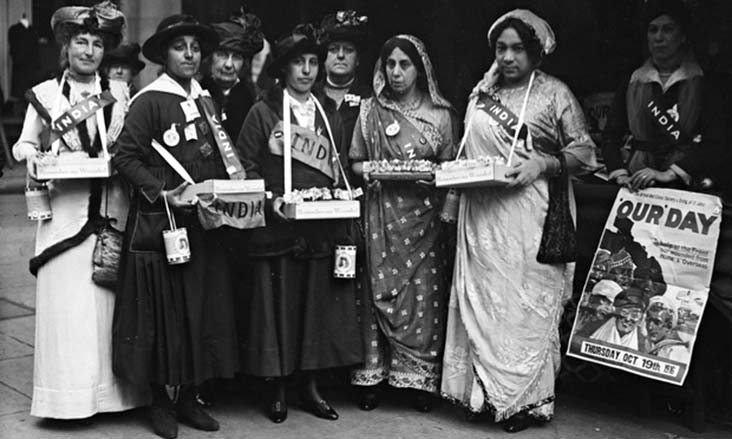This International Women’s Day, we unearth a genuine kohinoor diamond from the dusty corridors of herstory and make her sparkle. Sophia Duleep Singh is a forgotten foremother of India, Pakistan and England – the granddaughter of the great lion king of Punjab Ranjit Singh and the famed last possessor of the Kohinoor diamond before the British took it to England.
Ranjit Singh was known for wearing the diamond on his arm. The British manipulated his son Duleep Singh into surrendering his kingdom to the British when he was a child and took him to England where he grew up under Queen Victoria’s supervision. Sophia Dulpeep Singh and her siblings were born in England (their mother was half German, half Abyssinian).
Born in 1876, Sophia Duleep Singh’s achievements for women’s advancement in Britain and elsewhere were immense and her contributions to the Indian freedom movement were significant. Raised in England towards the end of the 19th century, she was at the helm of the early feminist movement, the Women’s Suffragettes who fought for women’s right to vote in Britain in the 1920s.
 As an Indian princess and Queen Victoria’s goddaughter, she held access to privilege that few British women could have entertained at that time. She combined her fame and leadership skills to work for the betterment the general good rather than focusing on any ethnic or religious community. As women gained the right to vote in the West, many other rights and privileges followed.
As an Indian princess and Queen Victoria’s goddaughter, she held access to privilege that few British women could have entertained at that time. She combined her fame and leadership skills to work for the betterment the general good rather than focusing on any ethnic or religious community. As women gained the right to vote in the West, many other rights and privileges followed.
Interestingly, what fuelled Sophia Duleep Singh’s passion for the Suffragette’s movement was the Indian independence movement. While on a trip to India for the first time as an adult, she was inspired by freedom fighters Gopal Krishna Gokhale and Lala Lajpat Rai to fight for social progress in general. This included supporting the Indian freedom struggle and oppression of any kind.
Later in life, during World War I, she offered her services as a nurse to wounded Indian soldiers. She also provided shelter and gave access to proper outerwear to 40 000 hideously treated workers who transported goods between India and Britain for the British Raj.
 When Sophia Duleep Singh passed on in 1948 soon after partition, she left behind funds for three separate schools for Hindu, Muslim and Sikh girls.
When Sophia Duleep Singh passed on in 1948 soon after partition, she left behind funds for three separate schools for Hindu, Muslim and Sikh girls.
Why her name was smothered in dust is likely due to three factors. One was that as a by-product of that time, many of those in power, including Winston Churchill, opposed her stances on women’s rights. And so, like many suffragettes (voting rights activists) of that time, her name was left in obscurity. The other was the threat of an uproar in sympathy of Indians towards her. The third is because she lived and died outside the Indian sub-continent so many desis never knew about her to reclaim her.
I feel that it is right to reclaim this Kohinoor diamond by honoring her contributions to herstory and the principles she stood for. Because many of the rights and privileges we have today are because of people like her.
Sourced from:
Video: Sophia: Suffragette Princess – the Sikh Museum Initiative
Book: ‘Sophia: Princess, Suffragette, Revolutionary’, by Anita Anand (Bloomsbury, 2015)
Swati Sharan is a freelance writer based in Hamilton, Canada. She is active with the Indo-Pak peace movement Celebrate Days for Peace. Email: [email protected].









